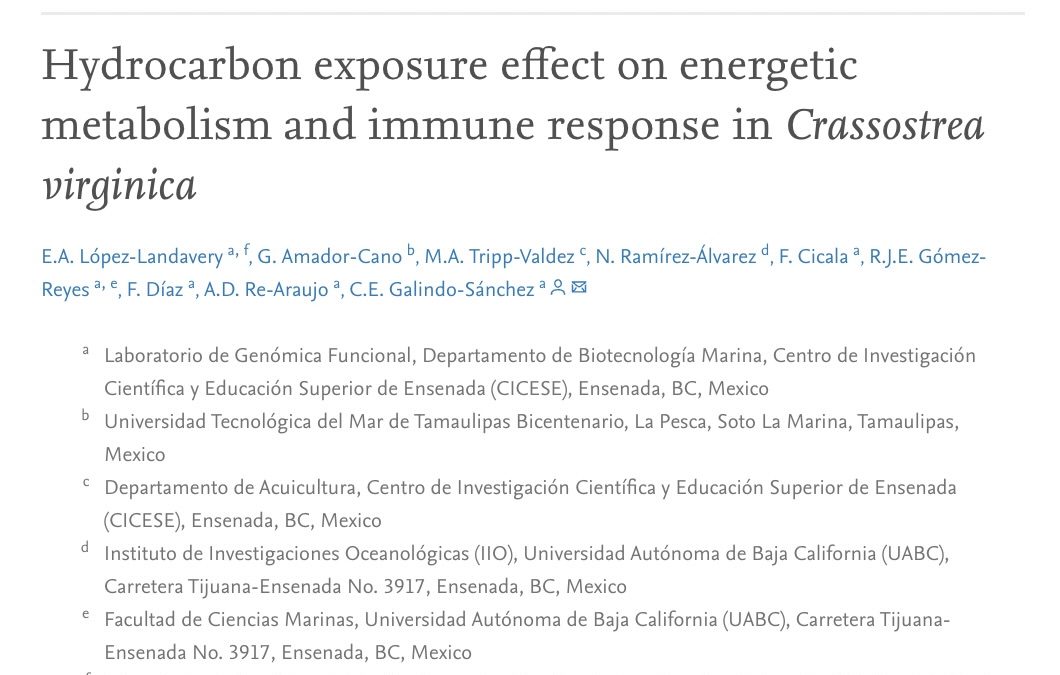Authors: E.A. López-Landavery, G. Amador-Cano, M.A. Tripp-Valdez, N. Ramírez-Álvarez, F. Cicala, R.J.E. Gómez-Reyes, F. Díaz, A.D. Re-Araujo, C.E. Galindo-Sánchez
https://doi.org/10.1016/j.marpolbul.2022.113738
Abstract
Crassostrea virginica was exposed to different light crude oil levels to assess the effect on transcriptomic response and metabolic rate. The exposure time was 21 days, and levels of 100 and 200 μg/L were used, including a control. The most significant difference among treatments was the overexpression of several genes associated with energy production, reactive oxygen species (ROS) regulation, immune system response, and inflammatory response. Also, a hydrocarbon concentration-related pattern was identified in ROS regulation, with a gene expression ratio near 1.8:1 between 200 and 100 μg/L treatments. Statistical analysis showed no interaction effect for metabolic rate; however, significant differences were found for oil concentration and time factors, with a higher oxygen consumption at 200 μg/L. Our findings provide novel information about the metabolic response of C. virginica during hydrocarbons exposure. In addition, our results point out which biological processes should be investigated as targets for searching bioindicators.
Keywords: Gene expression; RNA-Seq; Metabolic rate; Oyster; PAHs


Recent Comments